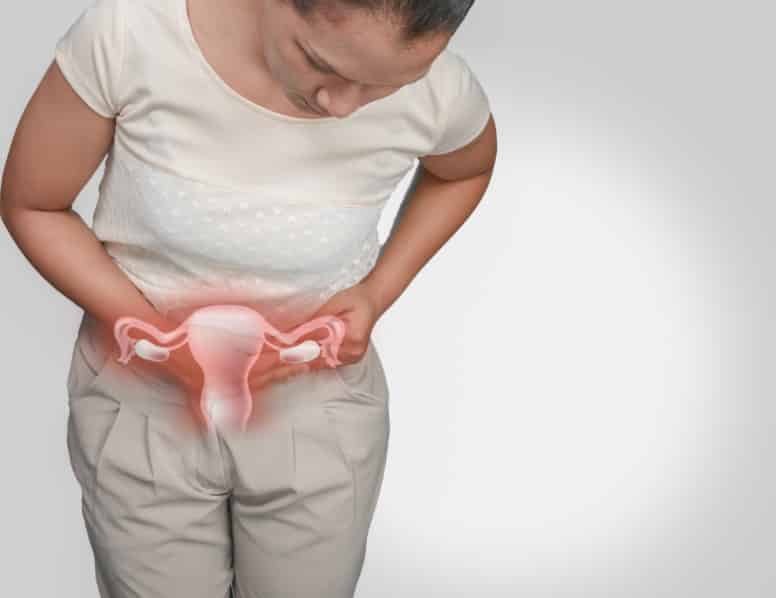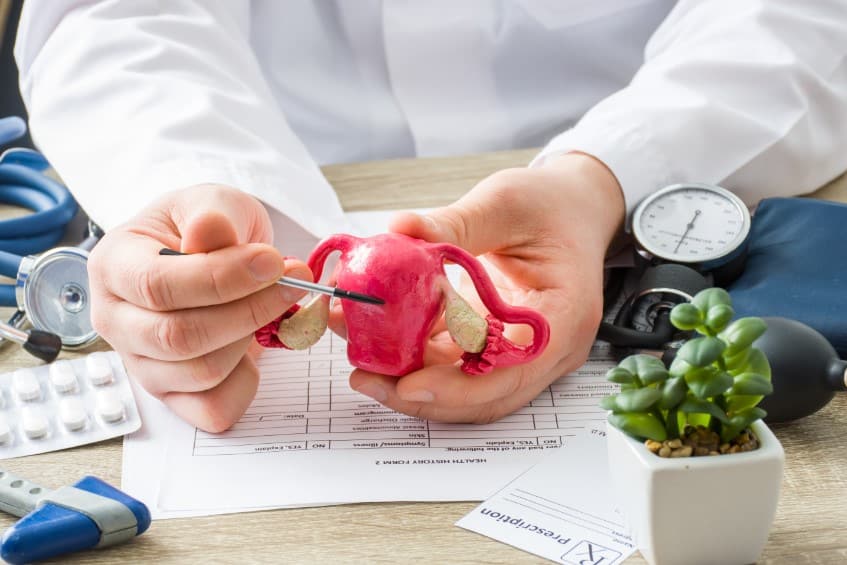Every pregnant woman expects the pains, aches, and discomfort to end at childbirth. However, this is not always the case. In fact, most women still experience postpartum cramps and swelling in the first weeks after childbirth.

Thankfully, there’s a way out.
In this article, we’d talk about everything you need to know about postpartum cramping; what it is, the causes, duration, and how to treat it.
Read on to find out more!
Table of contents
What Are Postpartum Cramps?
Remember how your growing baby shielded you from the horrors of menstrual cramps for 9 long months?
Well, the cramps are back.
But this time, they don’t follow any cycle.
Postpartum cramps are commonly called ‘afterbirth pains’. This refers to the normal, but painful, cramps that occur after childbirth as your uterus returns to its pre-pregnancy size.
What Causes Postpartum Cramps?
Although they are quite uncomfortable, postpartum cramps are quite common in the first few weeks after delivery. Most times, it is just the response to your uterus returning to its normal state (the non-pregnant uterus). On the other hand, depending on the cause, postpartum cramps can be a reason for concern.

Here’s the good part:
We’re here to provide all the info and guide you through every step of this journey.
The major causes of postpartum cramps include:
1. Afterpains
This is the most common cause of postpartum cramping in women. After childbirth, your uterus shrinks as it returns to its actual (or pre-pregnancy) size. This way, excess uterine tissue, and fluids are removed as a discharge called lochia. As this happens, your body also tightens the blood vessels in the uterus to regulate bleeding and prevent blood clots.

For most women, this process is quite similar to (but milder than) labor contractions. In fact, they are termed ‘afterpains’ because these painful contractions are felt after you deliver your precious one.
Although postpartum cramps feel so similar to menstrual cramps, the pain often ranges from mild to severe and is usually more noticeable in the 2nd or 3rd pregnancy. In addition, afterpains are only very uncomfortable in the first few days after childbirth. With time, the cramping often fades away.
2. Constipation
Most women often struggle with pooping after childbirth. Postpartum constipation may result from dehydration, medication, or hormonal fluctuations. Interestingly, women who undergo Cesarean sections are more likely to have constipation after childbirth.
Sometimes, postpartum constipation comes with cramps, bloating, and slight pressure in your lower abdomen.
3. Cesarean Section
As we mentioned earlier, afterpains are felt as the uterus contracts after childbirth. Even if you’ve had a C-section, your uterus would still contract as it adjusts to life after pregnancy.

In addition to postpartum cramps, women who have a Cesarean delivery may also feel some discomfort in the lower abdomen.
Furthermore, postpartum cramps may also occur as a result of other factors like:
- Urinary Tract Infections (UTIs): This refers to any microbial infection which affects the ureters, bladder, urethra, and kidney. In addition to postpartum cramps, mothers with UTIs may also experience fever, urinary difficulties, cloudy urine, or pelvic pain.
- Endometritis: In plain terms, this is an inflammation (or swelling) of the uterine lining caused by infection. Women with endometritis often experience painful cramps, fever, vaginal discharge, and pelvic pain.
- Bacterial Vaginosis: is a bacterial infection that arises whenever the uterus contains a large population of harmful bacteria. Sometimes, this condition causes postpartum cramps, coupled with a burning sensation while urinating, foul-smelling discharge, and pain/itching in the vulva.
How Long Do Postpartum Cramps Last?
Although postpartum cramps begin immediately after you deliver your little one, it often peaks on the 2nd or 3rd day after birth. Then the cramps continue for about 7-10 days after delivery as your uterus returns to its pre-pregnancy state.
Here’s the good part.
Postpartum cramps usually do not extend beyond two weeks post-delivery.
However, if the cramps are caused by other underlying medical conditions, like infection or constipation, they will last for a longer duration. If this happens, the cramps may continue until the underlying cause is treated.
Therefore, if you’re experiencing any form of pain or cramps after childbirth, please contact your doctor immediately to begin treatment.

How to Treat Postpartum Cramps
One thing you have to know is, you do not have to suffer, Mama.
Although your uterus needs to contract and shrink after childbirth (and there’s no way to prevent this), you can treat the cramps and relieve the pain that comes with it.
Here are some of the ways to treat postpartum cramps:
1. Prescribed Medication
With your doctor’s prescription, you can use common pain relief medications like Diclofenac or Ibuprofen to reduce the pain. In fact, if you’re experiencing severe cramps, your doctor may give you a prescription for some stronger pain meds that would take the edge off.
Furthermore, if the cramps are caused by constipation, drugs like laxatives or stool-softeners would also provide some relief
2. Heat Therapy
As you deal with postpartum cramps, you can also use heat compresses or pads to get some much-needed relief. This is done by placing the hot compress or heating pad on your lower abdomen for a regulated period of time,
3. Move Around
Movement helps, really. This is especially important if the cramps are caused by postpartum constipation. As you recover, try to get up and walk around if you can.
4. Relax
Now, we’re sure you’ve heard this word about a thousand times since you got pregnant. The fact is: proper rest may be all you need. Furthermore, you can try out some deep breathing exercises that strengthen your core muscles and help you recover faster.
As much as you can, please get enough sleep.
5. Take Bathroom Breaks
While dealing with cramps after childbirth, it also helps to pee as soon as you feel the urge to. As your uterus heals, it is best to keep your bladder empty as it reduces the pressure on your uterus.

Do I Need To Speak To My Doctor About Postpartum Cramps?
Although cramps are common, severe pain after childbirth is not.
If you experience any of the following symptoms after delivery, please contact your doctor ASAP:
- Fever
- Vaginal Discharge
- Excessive Bleeding
- Extremely Painful Urination
- Severe (sharp, stabbing) Abdominal Pain
- Redness on the Surgical Site (If you had a C-Section)
It is really important to watch out for these warning signs as they may be indicative of a more serious medical condition. In fact, the American College of Obstetricians and Gynecologists recommends that you contact your healthcare provider in the first three weeks after childbirth. When you do this, it is easier to explain and discuss every recovery-related challenge.
A Final Note from Edie & Amy
We understand that a lot of changes occur in the first few weeks after delivery. Nonetheless, your health is just as important, Mama.
As you adjust to the demands of motherhood, please try to take care of yourself too; rest well, eat healthy, and remain happy. Thankfully, postpartum cramps often stop within a week or two of childbirth.
Finally, remember to watch out for the warning signs and contact your doctor if you have any questions or problems.
Stay strong, Mama.

